Best Undistributed Films of 2015

I’ve spent the last several weeks of December doing what almost everyone who writes about film does at the end of the year: compiling, ranking and showing off lists. The only thing is that, for almost every list I put together, everything on it needed to have a public release in 2015. That means every film needed distribution of some sort, disqualifying anything that might not be accessible or lucky enough to score some sort of availability outside of film festivals.
That’s why, like for 2014, I’ve decided to compile another list of great films that don’t have a US distributor. For some of these films, it might not be surprising to see that buyers aren’t clamoring for them (a perception that has nothing to do with the film’s quality); other titles are more surprising in that they still don’t have distribution, given their accessibility and/or accolades. Either way, all of the films on this list deserve the chance of being seen beyond the festival circuit, and hopefully with enough interest or demand that might happen for a good number of these titles. Last year, over half of the films profiled on our 2014 undistributed feature wound up getting distributed; here’s hoping that amount winds up being higher for these 15 films.
Best Undistributed Films of 2015
The Academy of Muses

José Luis Guerín (sort of) returns to narrative filmmaking eight years after his masterpiece In the City of Sylvia, creating an entrancing and dense work done on a micro budget. Starting out as a documentary, Guerín films lectures held by Italian Philology professor Raffaele Pinto (playing himself) about poetry and the role of the female muse as inspiration for male artists. The opening act can feel like a tidal wave of concepts and ideas, but Guerín eventually settles down once he brings in a narrative involving Pinto using several of his students as muses. Shooting on cheap DV with no cinematographer, Guerín pulls off images just as evocative as the ones in Sylvia, once again using reflective surfaces to portray emotions and sensations that could never be summed up properly with words. It’s a film that crackles with energy from beginning to end, and yet another example of great small-scale filmmaking.
Update: Grasshopper Film has acquired US distribution rights for The Academy of Muses.
The Ardennes
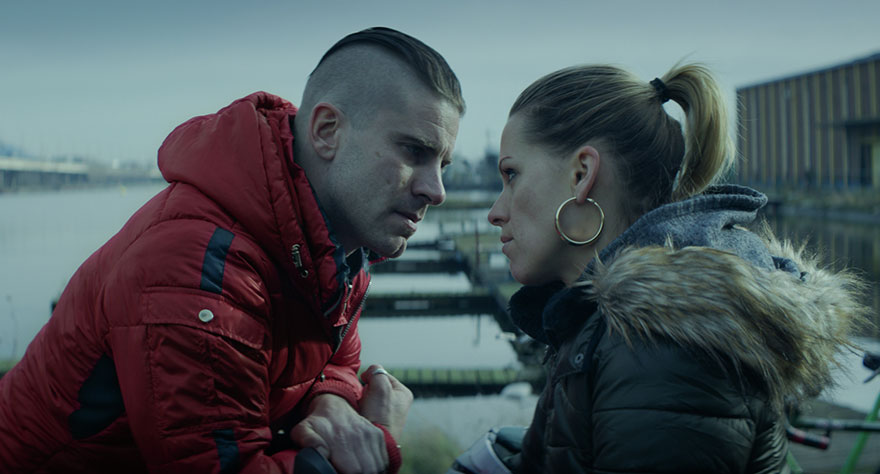
Robin Pront’s directorial debut surprised me back when I saw it at TIFF, as its familiar story of a love triangle between two criminal brothers (one reformed, one just out of jail) and the woman between them sounded all too familiar. But The Ardennes is both sophisticated in its approach and more thematically rich than one would expect, focusing on its characters trying to move on from their past sins by working their way above the poverty line. That gives The Ardennes a powerful and tragic edge, acknowledging how much social, political and systematic factors can muddle the distinctions between good and evil. Combined with great performances from its three leads (especially Veerle Baetens, who works wonders with what could have been a thankless role) and a gut punch of an ending, it’s surprising that The Ardennes is still awaiting US distribution.
Update: Film Movement has acquired US distribution rights for The Ardennes.
The Brand New Testament
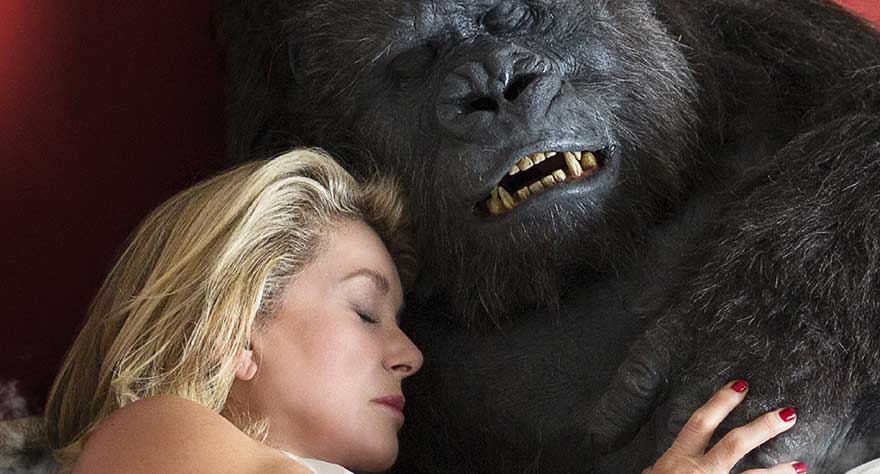
In Jaco Van Dormael’s The Brand New Testament, God (Benoît Poelvoorde) is a mean old drunk who spends his days creating disasters, diversions and annoyances on his computer to toy with humanity. He locks his wife (Yolande Moreau) and 10-year-old daughter Ea (Pili Groyne) in his apartment, worried that if they get out they’ll end up like his son. But Ea rebels against him, leaking out everyone’s date of death before escaping to Brussels in the hopes of recruiting six new apostles. It’s a strange film to say the least, with a premise viewers will have to accept as is if they want to enjoy it. Luckily, Van Dormael is intensely committed to seeing his vision through, and the film is bursting with so many weird ideas it’s easy to get won over by its energetic style. It’s a light, humourous attempt by Van Dormael to confront some of the bigger questions involving existence, and probably the cutest act of blasphemy you’ll ever see.
Update: Music Box Films has acquired US distribution rights for The Brand New Testament.
Despite the Night
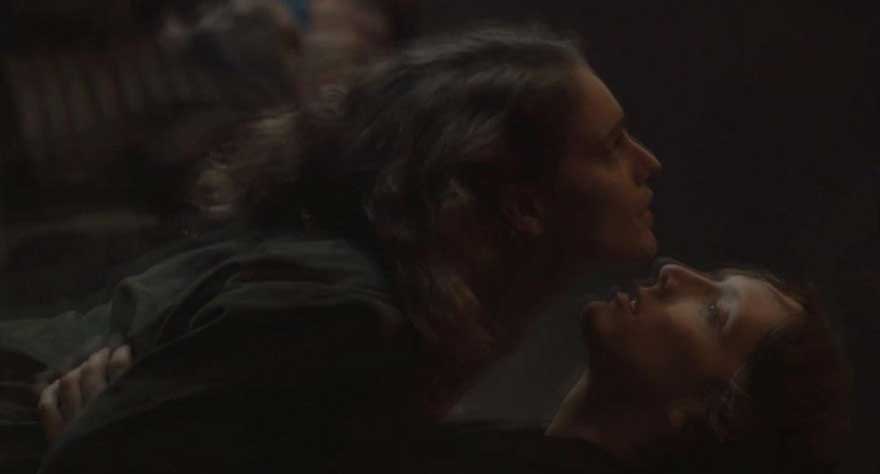
After being rejected by the major festivals, Philippe Grandrieux’s Despite the Night (Malgré la nuit) finally unveiled itself at Montreal’s Festival du nouveau cinéma in the fall of 2015, marking another disappointing treatment of one of the most interesting and consistent filmmakers working today. Grandrieux is a director more interested in the dark and insidious, finding unsettling ways to push the boundaries of cinema into new territory, and Despite the Night is more of the same. Lenz (Kristian Marr) returns to Paris searching for a woman from his past, and in the process he enters an intense, destructive relationship with Hélène (Ariane Labed), a disturbed nurse still grieving the loss of her son. Grandrieux has made what might be his most accessible film to date, although that’s not saying much considering narrative has never been of too much interest in his works (it’s best to just surrender to Grandrieux’s intense aesthetics). Few filmmakers are willing to venture into the darkness; Grandrieux dives in headfirst, leaving it up to viewers if they want to dive in alongside him.
El Movimiento
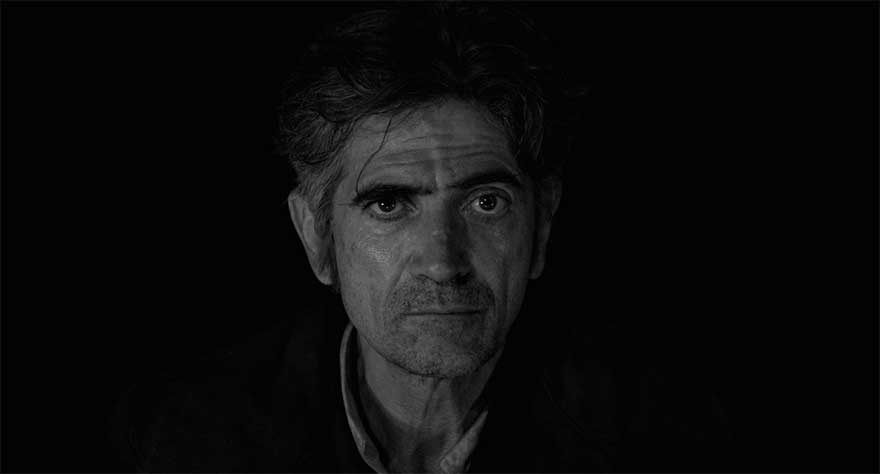
“1835. Argentina. Anarchy. Plague.” That title card sets the stage for Benjamin Naishtat’s El Movimiento, which quickly establishes its chaotic world by opening with a man getting his head blown off by a cannon at point blank range. From there, the film settles into following Señor (a fantastic Pablo Cedrón) and his two lackeys as they travel the desert, convincing people to join what Señor calls “The Movement” in hopes of unifying the country. Naishtat never bothers delving into what Señor’s movement exactly is (and Señor’s talks are nothing more than vague statements delivered with intensity), a choice that puts the focus more on the quest for power and dominance than ideology. People familiar with Argentina’s history and politics will certainly get more out of El Movimiento, but those unfamiliar should find plenty to enjoy whether it’s the gorgeous black and white cinematography, Pedro Irusta’s aggressive score, or Naishtat’s ability to create such an engrossing sense of time and place over a brief 65-minute runtime.
Happy Hour

With the distinction between cinema and television getting blurrier by the day, and binge watching becoming more common, along comes Ryusuke Hamaguchi’s 317-minute Happy Hour to show the unique pleasures cinema can bring when duration isn’t a restriction. The film follows four women in their 30s, close friends who discover one of them has been trying to divorce her husband for over a year. The woman’s decision to leave her husband, followed by her vanishing from the film altogether, throws the other three women’s lives into turmoil over their own relationships. Hamaguchi lets his film breathe considerably, dedicating large chunks of time to sequences like an art event all four women participate in, a hangout at a bar or a getaway to a resort, and by doing so takes full advantage of his runtime to provide a level of depth rarely seen in film or television. All four women transform considerably by the time Happy Hour’s credits start to roll, and Hamaguchi gives his characters enough time and care to make their changes deeply felt and all the more resonant.
How Heavy This Hammer
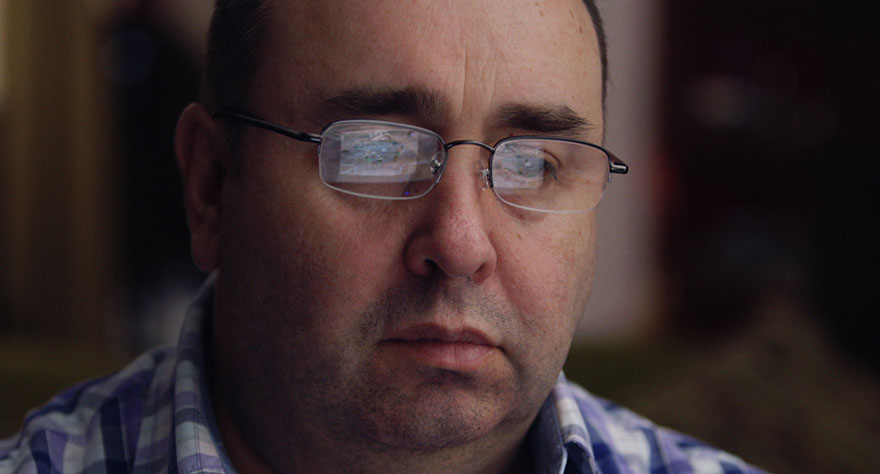
My heritage may make me biased, but 2015 was a good year for Canadian cinema (case in point: at least 3 films on this list are from the Great White North). And while a good amount of Canadian films blew me away last year, it was Kazik Radwanski’s How Heavy This Hammer that left me feeling excited for what the future might bring. Erwin (Erwin van Cotthem), a family man who spends most of his time playing computer games, makes a drastic shift in his life when he suddenly decides to leave his wife, yet finds himself in the same rut as before. Radwanski shoots almost entirely with handheld cameras and in extreme close-up, giving the film have a claustrophobic mood that emphasizes its protagonist’s feelings of being trapped that’s extremely effective. But Radwanski’s greatest skill here is his ability to get inside Erwin’s head without being judgmental, leaving viewers to make up their mind how to feel about him. Seeing something this formally interesting and empathetic come out of Canada only makes me hopeful that this is only the beginning of something much bigger for Canadian cinema.
Invention
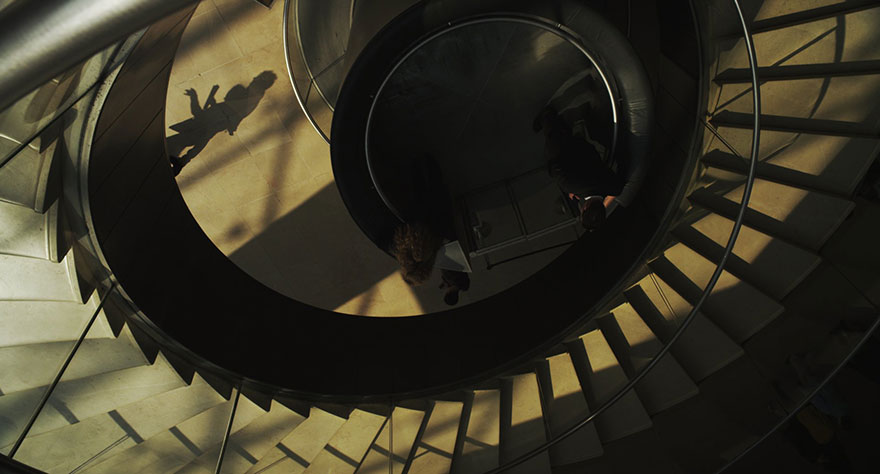
First off: kudos to Soda Pictures, who acquired both Canadian and UK rights to Mark Lewis’ Invention, a film that I never thought would get distribution of any kind considering it’s almost entirely silent. Other than a small piano number opening the film and a Fuck Buttons song used in the conclusion, Invention plays out with no sound whatsoever as Lewis’ camera swoops through three locations: Toronto, Sao Paolo and The Louvre in Paris. The film’s complex shots—using cranes, pans, zooms, tilts and just about every other possible type of camera movement—constantly redefines each space with every passing second, putting an emphasis on how cinema can influence our own perception. Taken on their own, Lewis’ shots are incredible works (the film is actually an anthology of a dozen films by Lewis), but Invention’s real power comes from the way it elegantly reminds viewers of how powerful of a tool cinema can be.
The Missing Girl
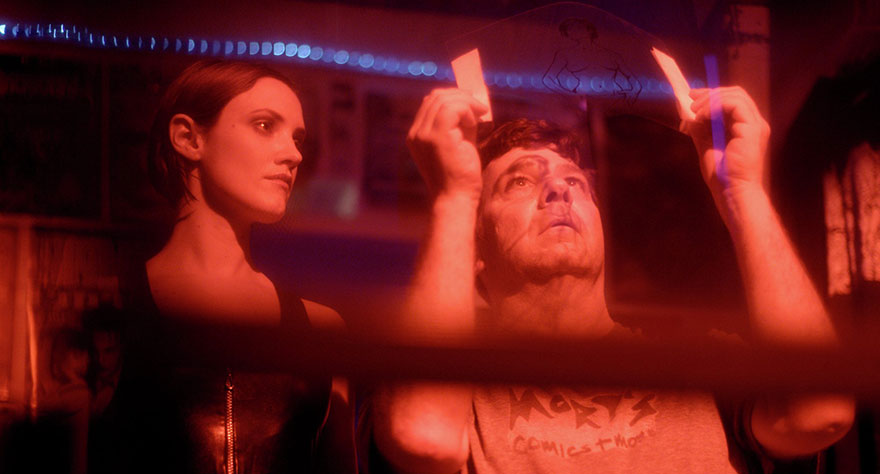
A US indie about one of life’s “late bloomers” isn’t exactly unheard of (Sundance has made an industry of these kinds of films), but A.D. Calvo’s The Missing Girl is a shining example of how much good execution can make even the most familiar material feel fresh again. The film starts out as a mystery: comic book store owner Mort (Robert Longstreet) hires a new employee (Alexia Rasmussen), only for her to disappear shortly after someone connected to an old missing persons case moves back into town. Calvo, with the help of an incredible performance by Longstreet, sets things up to look like Mort taking on the role of amateur detective before deliberately abandoning all feelings of mystery in the film’s second half. It’s a surprising move that pays off well, letting the film’s terrific sense of character take over while making Mort’s character arc much more impacting. With no distribution deal announced as of this time, I hope that someone will come along to help make this hidden gem no longer stay hidden.
One Floor Below
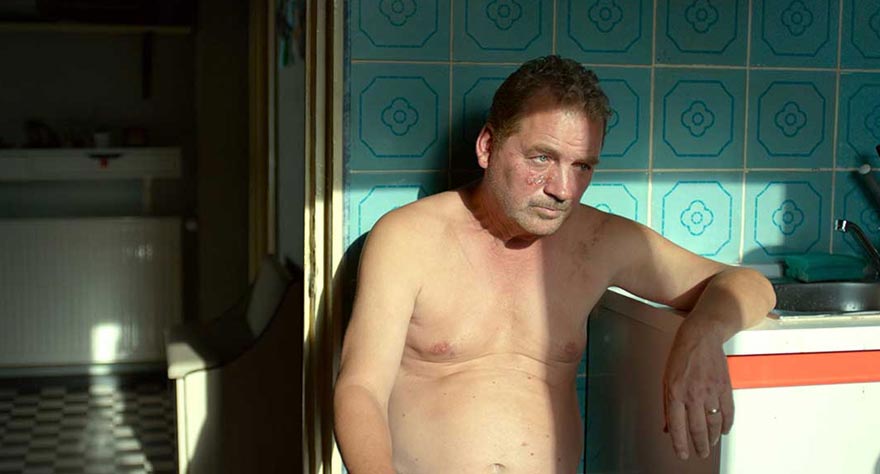
Radu Muntean’s follow-up to Tuesday After Christmas finds the Romanian director—one of the members of Romania’s “new wave” of cinema—dealing with material similar to Ruben Ostlund’s films (or, for a more specific comparison, Michael Haneke’s Code Unknown). Patrascu (Teodor Corban) overhears an argument between a man and woman in the apartment below his, eavesdropping until the man in the argument catches him listening in. Hours later, the woman from the argument is found murdered but Patrascu doesn’t tell the police about what he heard, and soon the man who caught him starts taking an interest in Patrascu. Muntean’s interests lie strictly with Patrascu and not the circumstances surrounding the murder, preferring to delve into how Patrascu, a successful businessman used to exercising control over everything in his life, deals with getting thrown into a situation where he no longer has the upper hand. It’s a slow boiler that’s hard not to get caught up in, with Muntean’s long, elaborately choreographed takes—a high-wire act in itself—feeding into Patrascu’s attempts to navigate the sticky situation he’s put himself in.
The Other Side
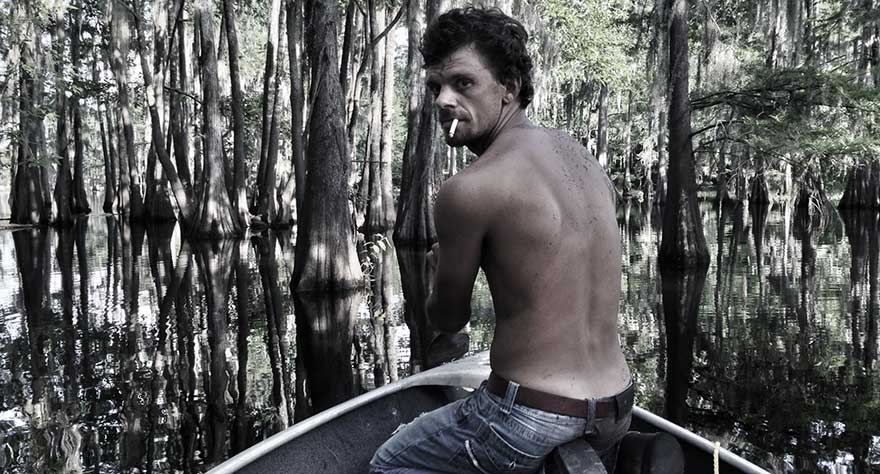
After completing his Texas Trilogy, Roberto Minervini moves into darker and more political territory with The Other Side. It continues Minervini’s unique blend of documentary and fiction developed in his earlier films, except this time he’s moved from Texas to rural Louisiana, looking at two groups located on the furthest edges of society. The film’s first half dedicates itself to Mark and Lisa, a couple trapped by their drug addictions, before switching over to a militia group preparing itself for what they think is an impending war with the government. It’s impossible to tell between what’s real or staged, and Minervini’s camera remains unflinching in its observation of some of the uglier aspects of both lifestyles. Yet The Other Side always shows a care and understanding towards its subjects/characters, with Minervini exploring the context behind their intense dislike of their government rather than pitying or dismissing them based on their situation. It’s a perspective that, in a time when political divisions get stronger and more abrasive with each passing day, feels more necessary than ever.
Update: Film Movement has acquired North American distribution rights for The Other Side.
Our Loved Ones

When talking about Anne Émond’s Our Loved Ones, the word ambition springs to mind immediately. For her second feature, Émond creates a multigenerational family story dealing with grief, loss, fatherhood, depression and mental illness among many other big themes, nailing almost all of them with a grace and honesty even some well-established filmmakers might envy. Opening with the suicide of a family’s patriarch, the film hones in on eldest son David (Maxim Gaudette) over the years as he gets married and has two children. It’s only later on in the film that Émond’s elliptical and deceptively undramatic approach pays off, as David begins suffering from the same feelings of melancholy that led to his father’s death. Émond’s portrayal of depression is remarkable in its precision, and when the narrative transitions from David to his daughter Laurence in the film’s final act, Our Loved Ones feels like a true epic done on a human scale. Our Loved Ones’ subject matter will be a tough sell to most audiences, but it’s a powerful experience viewers should have the chance to see for themselves.
Paulina

Winner of the top prize at Cannes’ Critics’ Week in 2015, Santiago Mitre’s Paulina is only further proof of how Argentina has a knack for producing some seriously good directors. Paulina (Dolores Fonzi), a lawyer with a promising career, throws it all away when she decides to finally pursue her passion, moving away to teach high school students in one of the poorer parts of the country. Not too long after starting her job, a group of men (some of whom include her own students) beat and rape her as she travels home one night after visiting a friend. It’s a grim set-up that turns into something more frustrating and complicated as Paulina decides to keep teaching, baffling and infuriating everyone around her. Revealing any more of the story’s twists and turns would be a disservice to what Mitre has crafted, turning Paulina from a captivating drama into a fascinating look at what happens when personal interests clash with ideological ones. Forzi, along with Oscar Martinez (playing her father), both give great performances that help steer the film away from feeling too provocative or contrived.
Tag

Only one of six (!) films Sion Sono made in 2015, Tag should prove to be a delight for fans of the director’s gonzo works like Why Don’t You Play in Hell? or Tokyo Tribe. Anyone familiar with Tag already (it won several awards at Montreal’s Fantasia Film Festival) should know about its opening sequence already, a kind of deranged remake of The Happening that’s more surprising and entertaining than anything M. Night Shyamalan has done in more than a decade. After that, Sono just keeps the strangeness coming at full force, as the film’s lead transforms into three different women while avoiding death at every turn, whether it’s from gun-toting teachers, malevolent gusts of wind or pig men. Sono, a master when it comes to pacing, never slows things down for a second, and his ability to throw out as many insane ideas he can think of means it’s impossible to guess what will happen from one second to the next. Hopefully, Tag will be the first feature of Sono’s six from last year to score US distribution, and help further expose Western audiences to one of the most prolific and singular directors in the world right now.
Uncertain

Uncertain fell off people’s radars after winning an award at Tribeca in 2015, a shame considering it was one of the best documentaries of last year. The title comes from the town directors Ewan McNicol and Anna Sandilands profile, a small city with a population of 94 sitting on the border between Louisiana and Texas. The film profiles three men ranging from 21 to 74, all of whom have their own present hardships or tumultuous pasts primarily dealing with addiction. At the same time, the film periodically looks at a crisis happening in the town when an invasive weed spreads throughout the local lake, wreaking havoc on the ecosystem and threatening to end people’s ability to fish for food and income. McNicol and Sandilands tie together both the aquatic weed’s stranglehold on the town with the vices and conditions of its three subjects, creating a metaphor so perfectly intertwined with the film’s themes it gives Uncertain’s final moments—a brief glimmer of hope amid a grim reality—an emotional resonance that lasts long after the credits roll.
